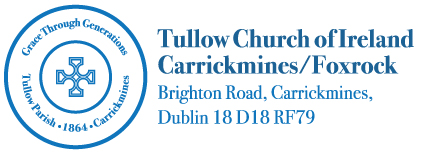This year marks the 100th anniversary of the beginning of World War I (otherwise known as the Great War or the War to end all Wars). However, it is likely that a succession of 100th anniversaries of World War I will be marked over the coming years until 2018 when the end of that war will be commemorated. In anticipation of this, the Church of Ireland Liturgical committee has produced an on-line resource for local use in parishes wishing to participate by holding Services of Remembrance. The resource carries an introduction by Canon Patrick Comerford (no stranger to Tullow Parish!), lecturer in liturgy at the Church of Ireland Theological Institute, which I have reproduced in full hereunder:
Remembering World War I:
The number of events to commemorate multiplies for the years 2014-2018. Understandably, much of the attention is going to focus on the centenary of the landings at Suvla Bay and the Gallipoli Campaign, between 25 April 1915 and 9 January 1916, and on the Battle of the Somme, which was fought between 1 July and 18 November 1916. A conservative estimate says nearly 4,000 Irish troops died in the 1915 Gallipoli campaign, but the figure is probably much higher.
On the first day of the Battle of the Somme, the 5,500 casualties of the 36th Ulster Division on 1 July were men drawn almost entirely from one community in Ulster. Nearly 2,000 soldiers from cities, towns, villages and townlands in Northern Ireland were killed in the first few hours of fighting. In a continuation of the same battle, the 16th Irish Division had 4,330 casualties in September, of
whom 1,200 were killed. These came mainly from the other three provinces. In addition, many more Irish soldiers fought in other divisions of the regular army or in the newly-raised battalions. The total number of Irish casualties cannot be calculated with certainty but they affected every part of the island and continue to influence the evolution of Irish politics.
The Battle of the Somme is an important but often politicised commemoration in Northern Ireland, yet in both campaigns men from both parts of the island and from both traditions fought side-by-side, suffered together, and sustained, encouraged and cared for each other.
Many of the stories from both campaigns remain untold. The majority of the Irish regiments, not all based on this island, have been disbanded, and the loss of continuity means the loss of story-telling. In addition, the changing political climate in Southern Ireland meant former soldiers and families felt they were forced into silence. Those who had gone out in bravery and thought they were returning home as heroes, now found their stories could not be told, and feared being marginalised as ‘traitors.’ Heroism and bravery were forgotten, and those who suffered, both former soldiers and their families, often suffered in silence. In the new Irish Free State, even the promise of secure jobs for returning soldiers often disappeared.
In giving voice to the silenced generation, the Church must give voice to their suffering, their untold stories, their bravery and heroism. Perhaps they answered the call from Redmond to fight for the freedom of small nations; perhaps they hoped their decision would bring financial security; an employment for their family and for future generations. How we design and structure our commemorations can restore these hopes and give new hope for the security they sought for future generations. Confession and thanksgiving, in the proper proportions and in creative tension and balance, can help achieve this. Patrick Comerford.
As we remember those darkest of days, may it be our hope and prayer that all the suffering, loss and sacrifice will not have been in vain. Rather, may we resolve to ensure that such suffering will never again be required or repeated.
With every blessing, John.
Tel: 2893154 / 086 3021376
